Okay, okay, I get it: No more project cars. For a while, anyway. May I interest you in a couple of rarely-seen executive sedans from the late 1980s? I sure hope so, because that’s what we’re going to look at.
Yesterday’s 4x4s went over like a lead balloon. Honestly, I get it; they’re both objectively terrible ideas, and I don’t have a whole lot of gumption when it comes to potential projects myself, these days. But I try to mix it up a litle, you know? I still think they’re both viable projects, but someone is going to have to put in some time and money into both of them, and I get the impression that that someone isn’t going to be anyone here.
The Toyota won handily, because it looks like it has a better chance of once again becoming a car. I guess, if pressed, I’d go the other way: the Land Rover is cheaper, and it would be a more interesting conversation piece sitting disassembled in the barn. Anybody can have a Toyota, but who do you know who owns a derelict ’50s Land Rover?

Nothing said you’d arrived in the 1980s like a European sedan. BMW and Mercedes were selling cars like hotcakes to young execs flush with their first big paychecks, Volvo somehow convinced Americans its cars were luxurious, Audi was kicking ass until, well, you know, and even Peugeot and Saab were getting in on the action. If it came from Europe, everyone knew it was expensive, and they all knew you had someone named Hans or Gunter on speed-dial to keep it humming like it should. No Cadillac or Lincoln carried the same status. For your consideration today, I’ve found a couple rare members of this class, one from a British outsider that got some help from the Japanese, and one from the unfairly-maligned black sheep of German automakers. Let’s take a look.
1988 Sterling 825SL – $3,800
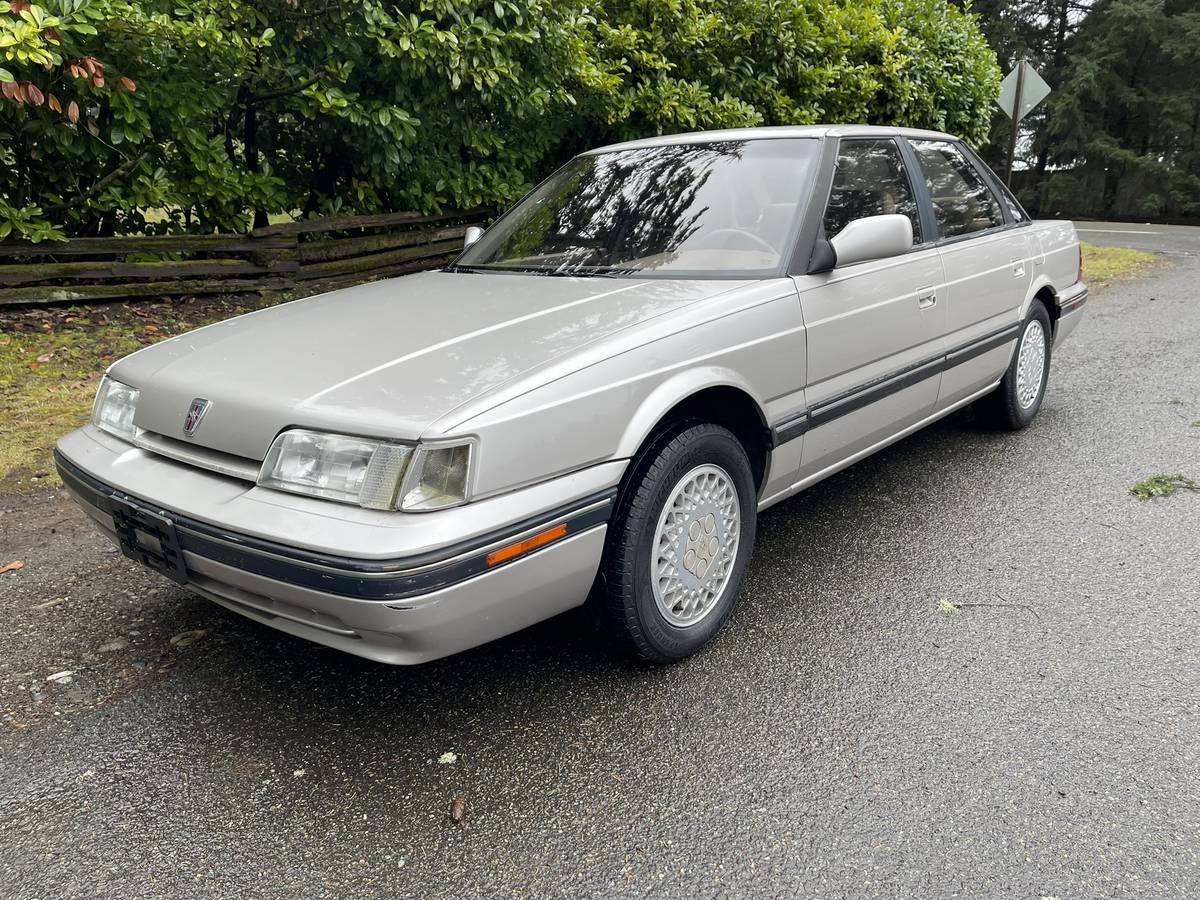
Engine/drivetrain: 2.5-liter OHC V6, four-speed automatic, FWD
Location: Tacoma, WA
Odometer reading: 39,000 miles
Operational status: Runs and drives well
Whole books could be, and have been, written about the disaster that was British Leyland/Rover Group in the 1970s and ’80s. The conglomerate left US shores in 1981, after a long and graceless decline from its ’60s heyday, but then it did something smart: it partnered with Honda. This car was one result of that partnership. It’s mechanically the same as the Acura Legend, but – and this is crucial – it was built in England, not Japan. Rover chose not to use its own name for this car, which was probably a wise move. The last Rover sedan sold in the US was the SD1 3500, a wedge of sadness and despair that not even a V8 could save. Instead, it chose the Sterling nameplate.

Powering this Japanese/British mixed breed is a Honda C25A six-cylinder, making 151 horsepower and driving the front wheels through a four-speed automatic. You could get a five-speed manual, but it’s rare in the Acura Legend and almost unheard-of in the Sterling. This one hardly has any miles on it; the six-digit odometer is clearly visible in the ad and shows 39,344 miles. It runs and drives great, according to the seller, which it ought to.
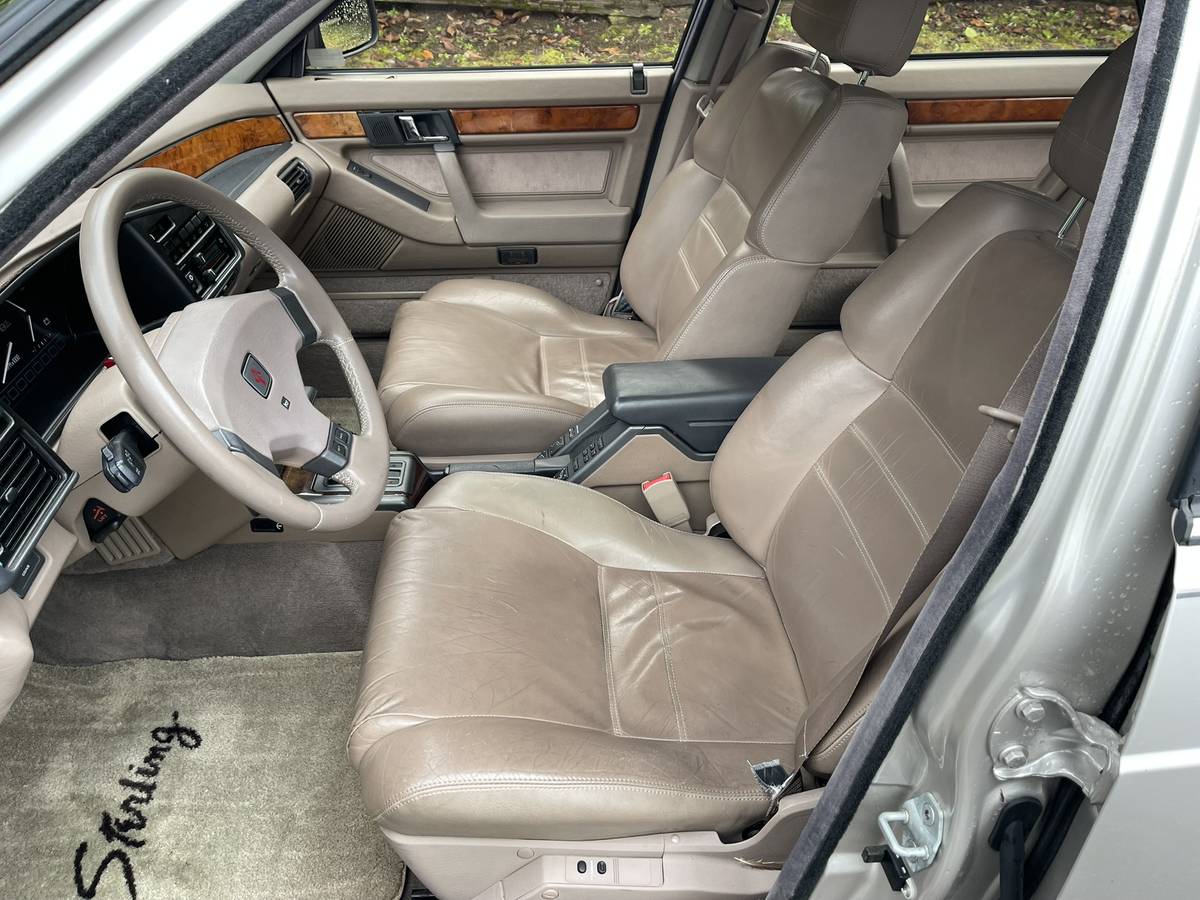
Because of Jaguar, British sedans had a reputation for luxury in America that Rover had to live up to with the Sterling. There was a base S model of this car available, with cloth seats, but if you’re going to get one, this SL model is the version to get. That’s real wood on the dash and door panels, too, just so you know. It has a trip computer in the dash with banks of buttons befitting its status as a European (this was way before Brexit, remember) luxury car. Hopefully it all still works; Rover did the electrical design for this car, not Honda.

I’ve been looking at photos of this car next to the Legend, and as far as I can tell, they don’t actually share any sheetmetal. They sure do look a lot alike, though, in that angular ’80s sedan way. It’s as clean and straight as you would expect for such a low-mileage car, but the trim on the rear bumper is a little wonky. Then again, it could have been that way from the factory. Build quality was not one of this car’s hallmarks.
1990 Audi 100 – $3,995

Engine/drivetrain: 2.3-liter OHC inline 5, three-speed automatic, FWD
Location: Everett, WA
Odometer reading: 137,000 miles
Operational status: Runs and drives well
It’s really a shame that the 60 Minutes malarkey is all that this car is known for. Nobody ever talks about how nice they are. We had three Audi 5000s in my family when I was in high school and college – an ’83 Turbo, an ’86 CS, and an ’87 standard model, all automatics – and they were all an absolute delight. The scandal hit Audi so hard that in 1989 it renamed its entire range in the US, realigning model names with Europe. Hence, this car, which was once the 5000, became the 100. It didn’t help sales much, sadly. This is a rare car.
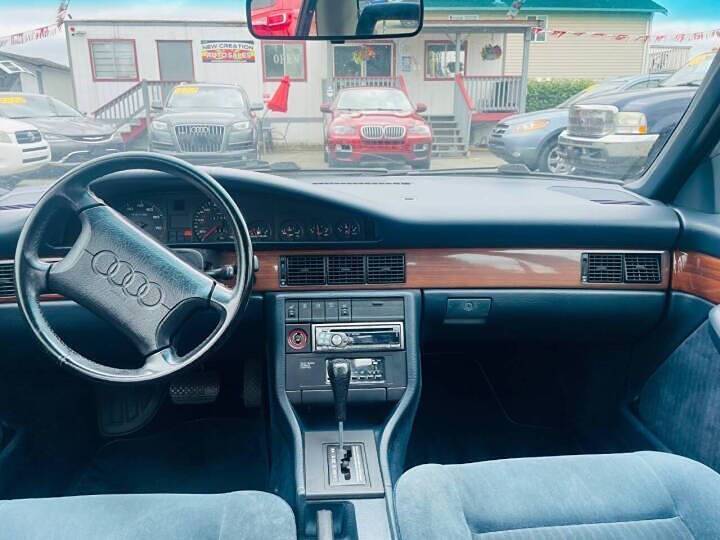
The heart and soul of this car is the same as it was in the 5000: Audi’s signature inline five, sticking out ahead of the front axle and driving the front wheels through a three-speed automatic. It’s the tamest drivetrain Audi offered in this car, but it doesn’t feel underpowered. There’s no overdrive, but I can personally attest to the fact that this car will cruise smoothly and quietly along at 90 miles an hour for as long as you want it to. This one has 137,000 miles on it, and the seller (a dealership, just FYI) says it runs and drives great.
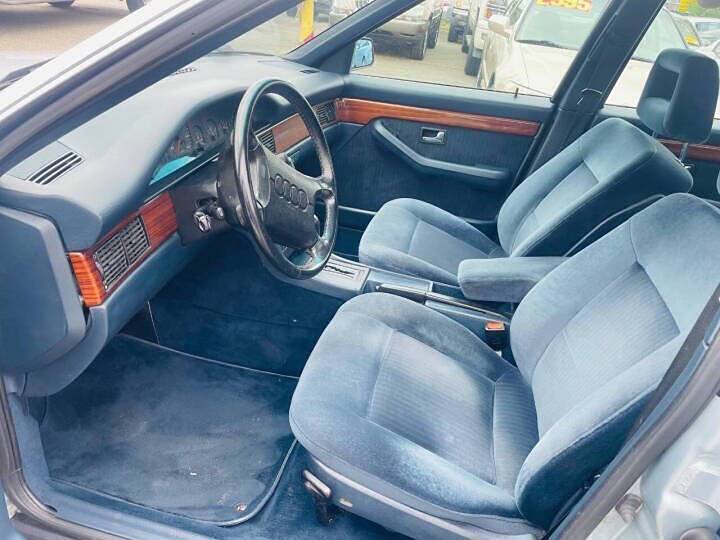
The driver’s seat shows a little wear, but the rest of the interior looks really clean. It looks like another one of those cars that did most of its miles with only a driver on board. It’s a pretty basic car as 100s go, but even the standard equipment includes an automatic HVAC system, power windows and locks, and some other goodies.
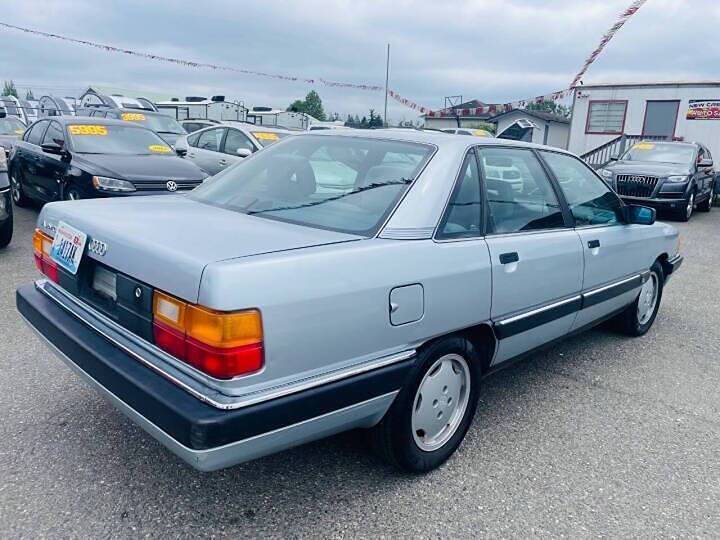
This car looked like a spaceship when it first appeared in the ’80s, and it has aged very well. This light blue was a really popular color for these, and this one is in really good shape. The paint is nice and shiny, and apart from a couple scuffs on the bumper, it’s untouched. It’s rare to see these with any rust, by the way; Audi galvanized all the sheetmetal throughout the whole car.
As nice as both of these cars are now, the reality is that neither one is going to be easy to find certain parts for. Basic mechanical and maintenance stuff shouldn’t be a problem, but if some interior trim breaks, or an electrical switch goes out, you could be in for an epic quest to find a replacement. In short, if you choose a car like this, you have to love it, or you’ll end up hating it. So my question for you is this: Which one do you think you could love?






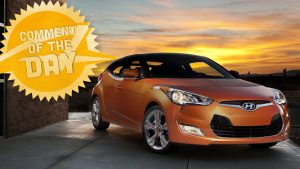


While I would rather have a Legend from that era, the Sterling looks to be in great shape and with nearly 100,000 fewer miles on the odometer and more opulent interior make it the easy choice. I loved that era of automotive electronics. It just felt so high tech back then.
The wheels look pretty cool too. I’m actually kind of tempted by it. It’s uncomfortably nearby.
Hobson’s Choice here, as I don’t really want either of these things. But forced to choose, I will take the British Legend, simply because it’s rarer, has far fewer miles on it, looks in lovely overall condition, and the Honda bits should be pretty trouble free, and it even has a decent number of gears in the slushbox (which is the bit to worry about). And if it looks that good after this long, must be one of the only good ones they managed to bolt together. On most of the early ones , the leather turned green while they were still under warranty.
Having helped a friend maintain a ’90 Audi 100 – noooope, nope, nope nope. For a German car, shocking amounts of stupid in those things. If it was a 5spd I might be slightly tempted though, that would even the playing field a little.
The first car I purchased was an 8-year old 1988 Sterling 825SL. It was close to the cost of this one too – $3200, but with about 100,000 more miles. I loved that car.
Alas, I had to sell it after a few years. It wasn’t electrical – I only had a few intermittent gremlins – it was the Honda-sourced automatic that let go. If only I had gotten the manual.
This one looks to be in great shape, outside of the missing corner light cover which happens to all of them. If I had more space for cars, I would love to buy it and take it to Radwood.
My dream-spec however, is a 91 827SLi 5-speed. They redid a lot of the wiring for 91 resulting in better reliability, and I love the SD1-inspired hatchback styling of the SLi model.
Your dream-spec version would be awesome. I was very attracted to those.
I had an ’86 Accord with maybe the same transmission and it did self-digest itself. Fortunately, I had bought an extended warranty.
Owned one of those Audis: Great car!
Ah, my first car purchase, a midnight-blue 5 speed 1984 Audi 5000. Once the hydraulic problems were sorted, it was a wonderful vehicle. Bought in 1990 from a really shady dealer who ended up offloading it for 3500 dollars, which was a steal indeed! As I had grown up without TV, I was completely unbothered by the bad press 😉
One thing I want you guys to help me with – weren’t the 5000/100 based on an aluminum chassis? I was completely sure about this point…
Nope, steel. Though fully galvanized, so they are extremely rust-resistant for that era.
Thanks! I knew there was always talk about how rust-resistant they were, and somehow I thought aluminum … The 100s of that era are also rare in France, where I live…
They are all but extinct in the US. Not helped by first the “sudden acceleration” scandal, and then the early ’90s recession absolutely tanking sales of them, so after the first few years of the Aero 5000, there simply weren’t many of them sold here in the first place..
A Japanese engineered, built to British standards, car. An oddball. It calls out to me.
How does that old joke go?
In heaven, cars are engineered by Germans, styled by Italians, with Japanese electricals and British interiors, In Hell, cars are engineered by the Italians, built by the British, with German electricals and Japanese interiors.
I just broke the 305-305 tie with an Audi vote!
I put the Sterling ahead by a single vote a couple of hours ago. I think this is the closest vote I recall ever seeing.
It’s 362-360, Sterling now.
Down to the wire!
Lol one of my shitbox finds was featured!
Wow, one vote separating the two as I type.
While I can never forgive Audi in its current form, being part of the criminal enterprise that poisoned our children, the 100 seems the better of the two choices.
I remember that the earlier Audis had those weird inboard disk brakes, but from what I can see, these are merely weird. But not mounted inboard.
3 hrs later and the difference in votes has doubled. That’s consistency right there…
I’m getting the Sterling so I can name it Scott.